Welcome! Are you navigating the intricacies of drafting an executive employment agreement? With so many key components to consider, it can feel overwhelming, but it doesn't have to be. From defining roles and responsibilities to outlining compensation and benefits, a well-crafted letter template can pave the way for a successful agreement. Dive in with us as we explore the must-haves for your executive employment letter!
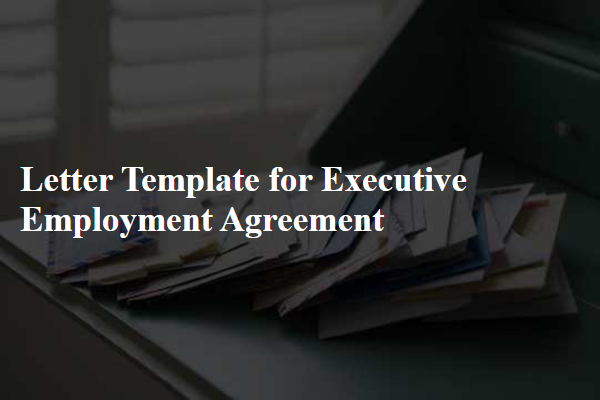
Position and Responsibilities
The executive employment agreement outlines the position of Chief Operating Officer (COO) at XYZ Corporation, a leading technology firm based in Silicon Valley, California. The COO will oversee daily operations, including budget management exceeding $50 million annually and strategic planning to enhance operational efficiency. Responsibilities also include leading a team of over 200 employees, implementing key performance indicators (KPIs) to assess productivity, and fostering innovation within the organization. Furthermore, the COO will report directly to the CEO and the Board of Directors, ensuring alignment with corporate goals and objectives. Collaboration with the marketing department, customer service teams, and product development divisions will be vital to drive company growth and maintain competitive advantage in the fast-paced tech industry.
Compensation and Benefits
Compensation packages for executive-level employment agreements are critical components of attracting top talent. Base salary (often exceeding $100,000 annually) typically reflects market standards for the industry and the candidate's experience. Bonuses linked to performance metrics, such as revenue growth or net profit margin improvements, may add 20-30% to total compensation. Equity compensation, often structured as stock options or restricted stock units, incentivizes long-term commitment to the company's success. Additional benefits may include comprehensive health insurance plans, retirement contributions (often matching 401(k) plans), and flexible work arrangements. Moreover, a severance package (often ranging from 6 to 12 months of salary) provides financial security if employment terminates unexpectedly.
Confidentiality and Non-Compete Clauses
Confidentiality agreements protect sensitive information shared between parties during employment. Such clauses often specify what constitutes confidential information, including trade secrets, customer data, and business strategies, ensuring protection against unauthorized disclosure. The duration of confidentiality obligations typically extends beyond employment termination, often lasting several years. Non-compete clauses restrict employees from engaging in rival businesses within a specified geographic area for a designated period, usually ranging from six months to two years. These clauses seek to prevent employees from utilizing their acquired knowledge and connections to gain an unfair advantage in competitive markets, fostering a fair business environment. Enforcement of these clauses may vary by jurisdiction, with courts examining reasonableness in terms of time, geography, and scope of restricted activities.
Termination and Severance
Executive employment agreements often include specific provisions concerning termination and severance, essential for clarifying responsibilities and expectations. Termination for cause typically involves actions like misconduct or failure to meet job performance standards, while termination without cause allows the employer to end employment without specific reasons, often requiring advanced notice, which could be 30 to 90 days. Severance packages usually encompass financial compensation, often calculated based on a multiplier of the executive's salary, and can include benefits continuation, such as health insurance and retirement contributions. In the case of a change of control, such as a merger or acquisition, severance terms may provide additional protection, ensuring a smoother transition for the executive. Negotiating these terms prior to commencement of employment is crucial, as they fundamentally impact the executive's financial future and job security.
Governing Law and Dispute Resolution
This Employment Agreement is governed by the laws of the State of New York, a jurisdiction known for its intricate business regulations. Any disputes arising under this agreement shall be resolved through arbitration, a method preferred by corporations for its efficiency and confidentiality, in accordance with the rules of the American Arbitration Association (AAA). The arbitration will take place in Manhattan, a vibrant financial hub, ensuring access to experienced arbitrators. Each party shall bear its own costs and expenses of arbitration, fostering a fair negotiation environment. The decision rendered by the arbitrator shall be final and binding, providing a conclusive resolution to any disagreements.
Letter Template For Executive Employment Agreement Samples
Letter template of executive employment agreement for Chief Marketing Officer

Letter template of executive employment agreement for Head of Human Resources
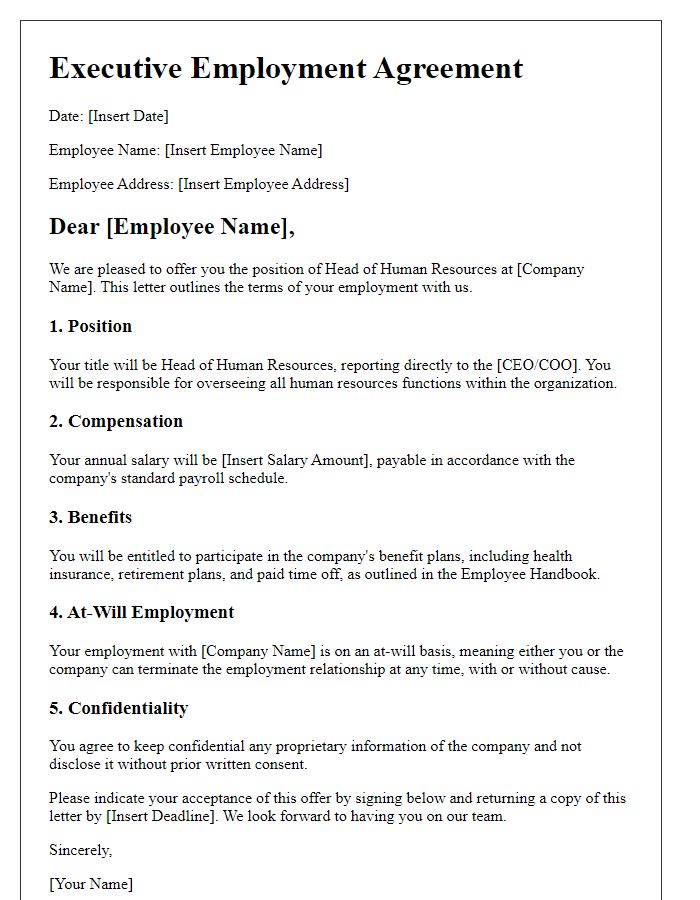
Letter template of executive employment agreement for Chief Technology Officer
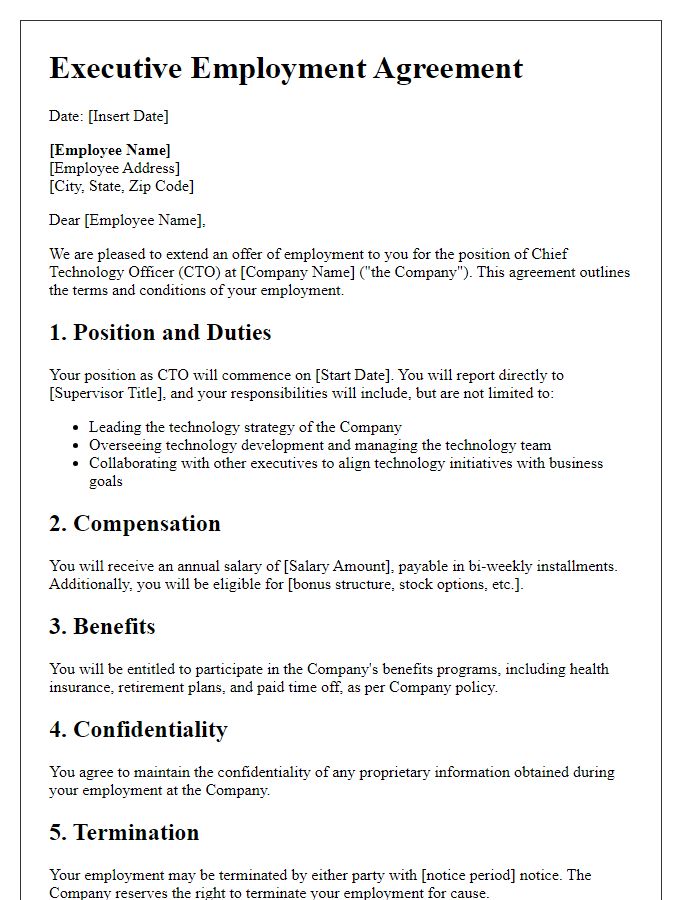

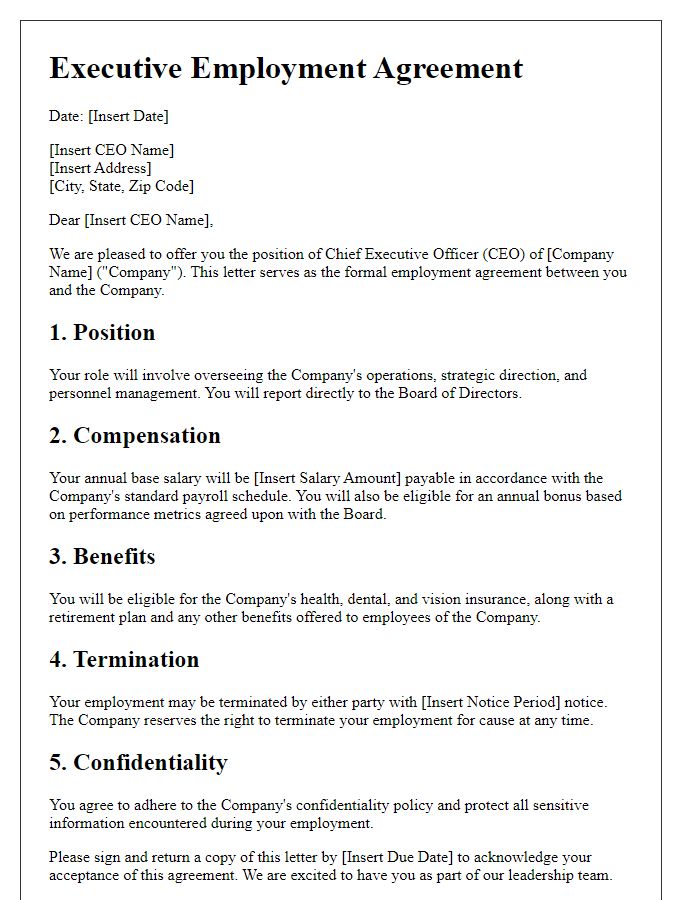
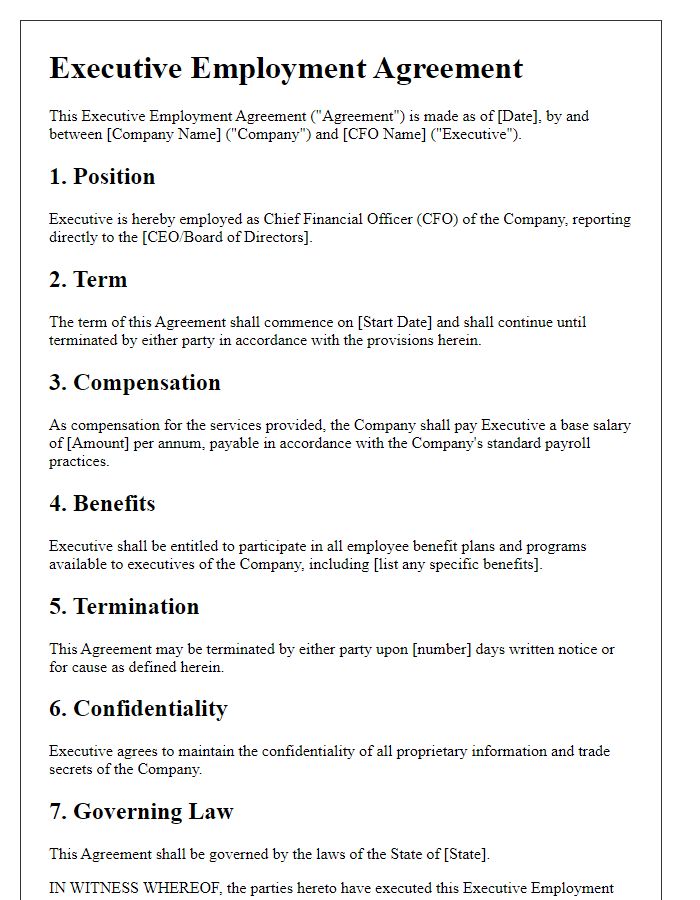
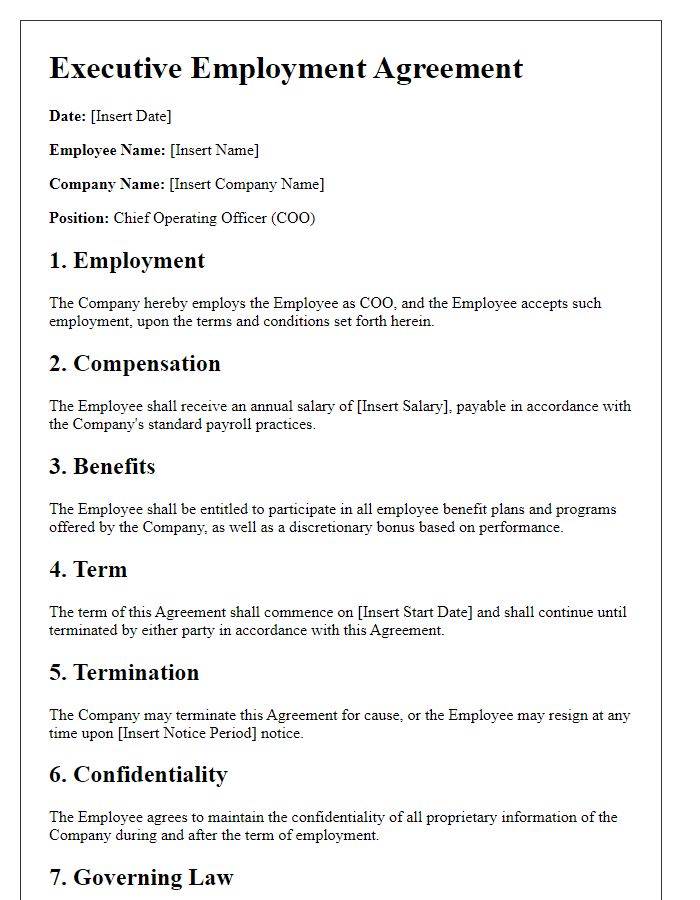
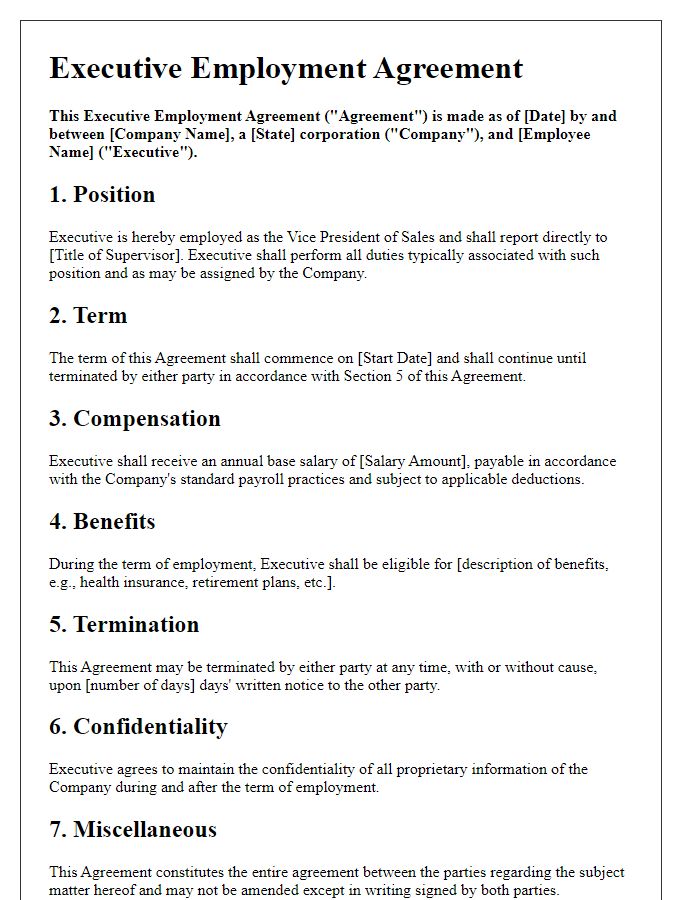
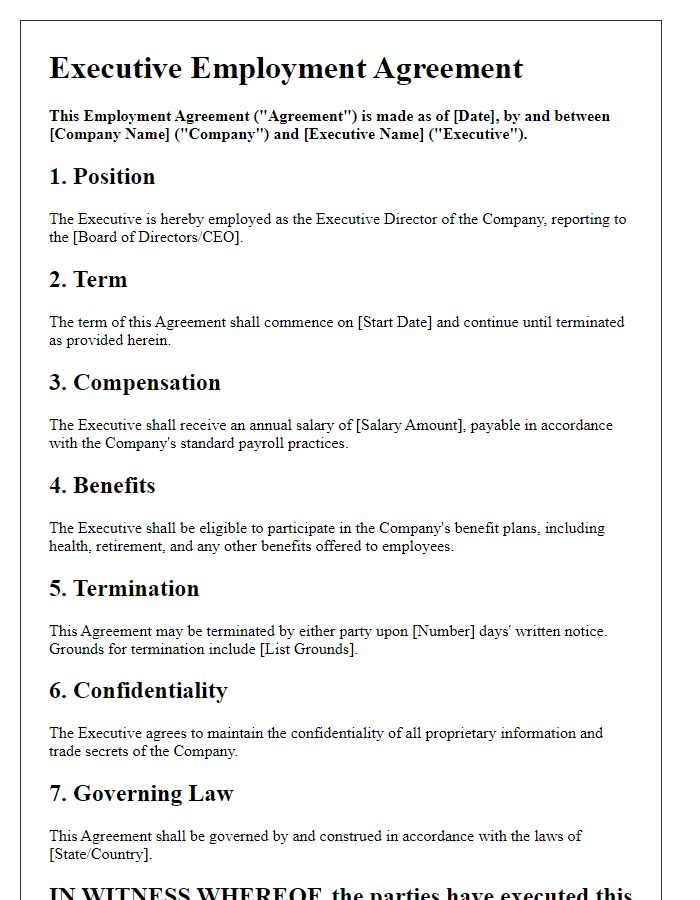
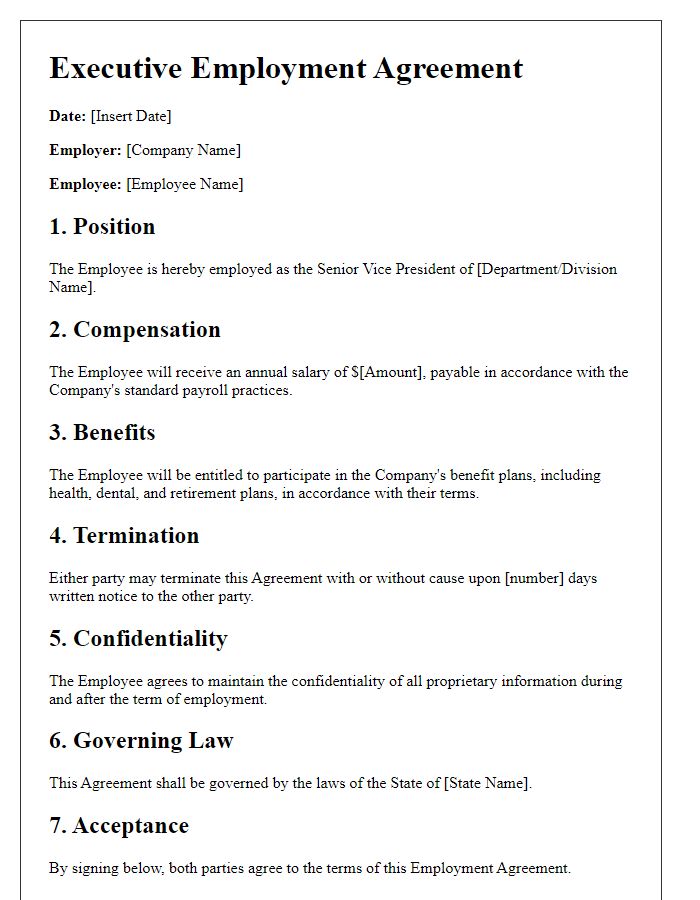
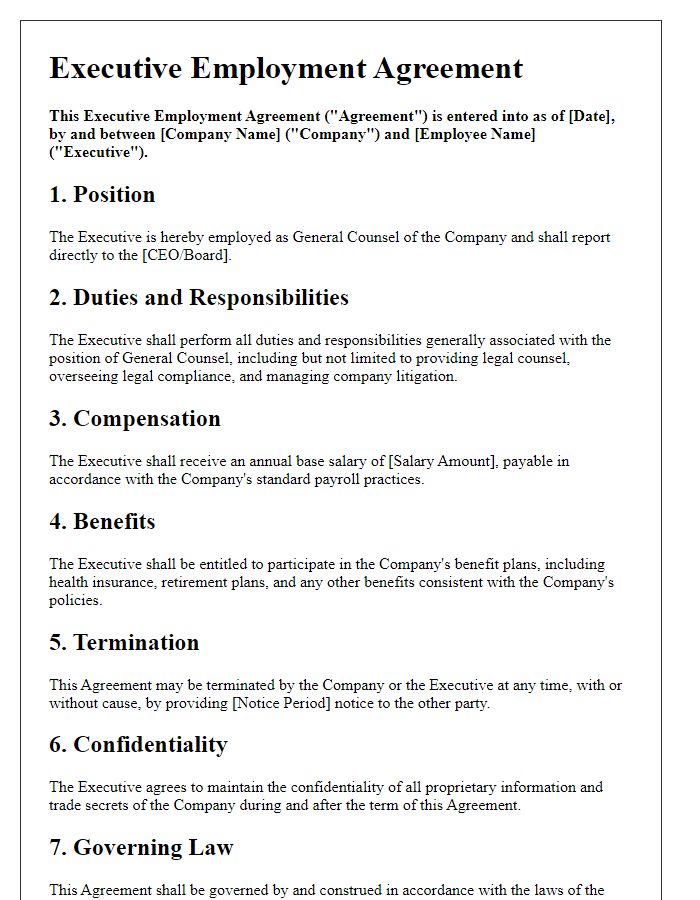

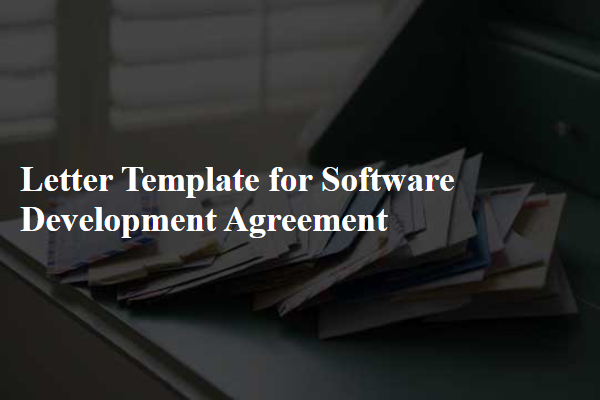



Comments